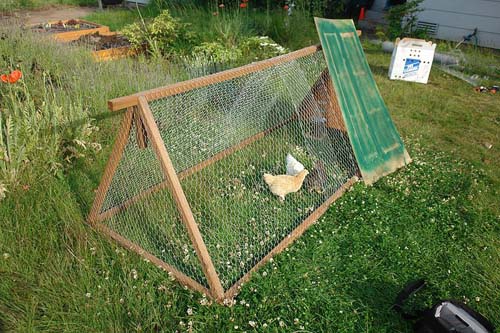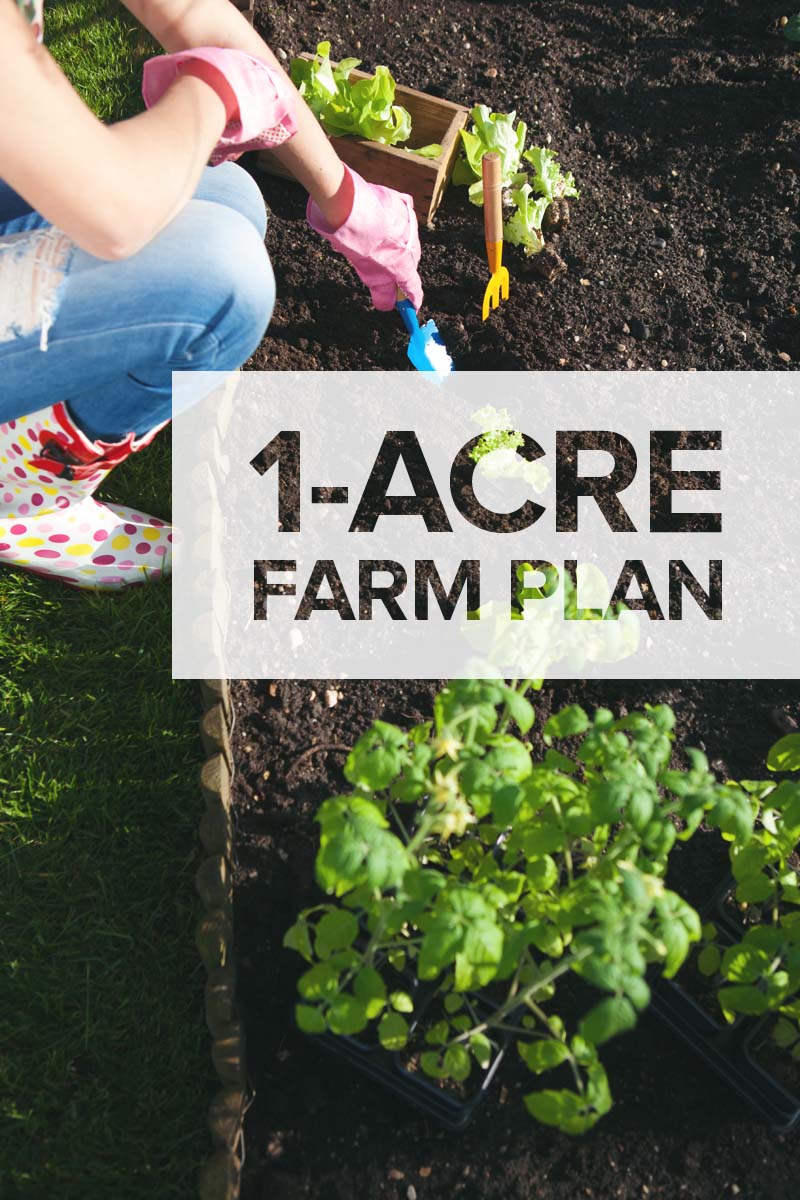You may now achieve your goal of living independently, closer to nature, and more economically.
On as little as one acre of property, small-scale agriculture can provide you with food, fulfillment, and valuable life lessons. The beneficial and healthful way of living can be yours.
It isn’t about how big you are.
Your one-acre farm will thrive if you have a fundamental idea, plan, organization, and efficient management.
First, You Need a Plan for Your One Acre Farm
You have the land, the desire, and the determination. Now, you’ll need to come up with a strategy.
Without one, your farm may turn into a series of costly errors that waste both time and money. As a result, begin by thinking and writing down a few things.
1. Goals
What exactly do you want from your tiny-scale farm?
Is it a weekend project or a full-time job?
Each is a viable option for small-scale farms, depending on your needs and preferences. How you utilize your available space will be defined by your goal. We’ll assume you want to be self-sufficient for the purposes of this discussion.
You may adjust this strategy to meet your different farming objectives.
2. Land and Soil Characteristics
Take a look at your property.
Is there a water supply? Pumping or purchasing water for crops and animals may be less expensive in land with water.
Is drainage sufficient? In a marshy environment, animals and plants need water, but they don’t thrive.
Determine the type of soil you have. For obvious reasons, farming methods and crops differ from place to place. Get to know your regional nuances.
To learn more about the crops that can be grown successfully in a particular soil, visit local farms.
Dense soils like clay can support shallow-rooted leafy vegetables like pumpkins, squash, and heavier plants (cabbage, Brussel sprouts). Clay absorbs moisture more effectively than other soils, but it requires care and supplementation.
Many crops benefit from rich, loamy soil, but it will dry out during the hot, dry summer months if it is too loose or has a high sand content.
To maintain crop growth, irrigation systems might cost more.
You may plant your survival crops in raised, prepared beds in some cases because the soil is so poor. Remember that your soil will improve with time. Your garden plots will be fertilized with last year’s crop residue, animal manure, and kitchen waste from your own use.
In a relative short period of time, poor soil may be rich, fertile, and productive if it is properly managed.
3. Climate

Temperatures and rainfall are important to know. These determine what to plant at certain times of year.
Your farm structures may be affected by climate. To prolong the growing season, colder areas typically need stronger buildings and may even need a greenhouse.
4. Budget
What funds are left over after your startup’s development and operating costs?
Don’t go over budget with your purchases. Starting small and growing as you gain experience is preferable than having your farm efforts fail due to a lack of funding.
5. Lifestyle
Consider what kind of lifestyle you want. What foods do you and your family like? Choose plants that you will like to eat and identify those appropriate for your region and soil.
Livestock production should be considered carefully by vegetarians. Livestock waste, which is rich in nutrients and thus replenishes what was taken from the soil while growing your produce, It’s a crucial component of growing your garden.
Consider selling your animals if you don’t want to eat meat. Manure should be retained and meat sold.
6. Layout and Design
Consider your own personal living area, as well as convenience, sanitation, and so on.
Reducing unnecessary hauling by putting animal pens near your compost pile and your growing area. The barn is in the heart of the property, making it easy to access. Flies are attracted to animal pens, chicken coops, and compost piles.
If possible, keep them away from your living area.
From OHHShop, here’s an example of a 1-acre farm layout:

Plants to Grow on Your One Acre Farm
Annual sustenance crops should include varieties of the following, depending on your taste preferences and soil conditions:
- Plot 1 – Potatoes, sometimes known as sweet potatoes
- Plot 2 – Beans and peas
- Plot 3 – Cabbage and lettuce
- Plot 4 – Beets, carrots, and turnips are all examples of root vegetables.
A list of vegetables and fruits, as well as an list of veggies to cultivate on little gardens, may be found in this article.

Plant a new crop in each plot every season as you rotate your plots.
Every year, leave a section of your plantinfor area dormant. Dormancy and rotation help to preserve nutrients, defend against soil degradation, and prevent the spread of agricultural pests.
Manuring droppings are returned to the soil by grazing cattle on dormant areas. The soil is enriched for the following planting by plowing grass, clover, and vegetable waste into dormant ground.
Best Farm Animals to Raise
Two animals to consider as a beginning farmer are: Chickens and goats are good starter animals because they are simple to maintain. They’re also important for improving the fertility of your soil, which is why they’re included in manure production.
They are low-maintenance farm animals, as far as I know. That will be critical, particularly in your early years of farming.
1. Chickens
You’ll have plenty of eggs and meat if you start with just a dozen or so laying hens. They will also create a consistent profit that can be used for barter or cash if they are properly managed.
It is critical that you choose a breed carefully. Leghorns are excellent layers, but they’re not particularly good for eating. Others, such as Cornish Rock, mature quickly and give birth to a lot of offspring but few eggs.
A dual-purpose bird is optimum for a small-scale farm. Plymouth Rock, Orpington, and New Hampshire Red dogs are included in this category. These birds are tough, have a high meat output, and lay a lot.
If you want to know which breeds are the best layers, make sure to read this article.
2. Goats
Why do goats have a reputation for being vicious? There are a few facts to consider:
- Every month, a doe gives birth to 90 quarts of milk, with 10 months of the year.
- A castrated man may yield 25 to 40 pounds of meat.
- A doe will provide at least one baby (kid) every year.
Goats are a low-maintenance species.
Letting them graze on uncultivated land in part, but make sure they are contained, is one way to give them food. They’ll devour your yard, your shrubs, and any tree leaves they can get their claws on if you don’t keep an eye on them.
Despite this, the small-scale farmer’s usefulness far outweighs their drawbacks. They can be kept where you want them and away from where you do not if the fencing is properly and securely installed.
To establish your herd, you’ll need at least three to four goats. A doe and a buck will provide you with enough milk and offspring to satisfy your meat needs, provided you have two to three of them.
Goats, like chickens, are bred for certain characteristics.
Some are better milk producers, while others provide meat. A meat-producing buck like the Boer, Spanish, or Brush should ideally be bred with a good milk-producing doe like the Nubian, Alpine, or American Lamancha.
Males make up about half of the pupils, and they can be fattened for meat. The others may be sold for extra cattle or employed to expand your current herd.
3. Other Livestock
Except for chickens and goats, learn about the best farm animals for beginners in this article.

A milk cow and pigs might be an option for the more adventurous beginner. They do have the benefit of producing high-quality meat and producing a lot of rich manure, but they take more time, effort, space, knowledge, and money than goats or hens.
It is a good idea to introduce them gradually into the farm. Chickens and goats are good starters. Add a milk cow once you’re comfortable with them. Miniature Jersey and Holsteins, about a third to half the size of a standard cow, are available.
Finally, increase your income and cash flow by adding pigs.
Important Structures to Build First
Many buildings are needed on each farm. They should be sturdy and not overly complicated.
1. Barn
Only tools, equipment, seed, and feed should be allowed to grow. Our posts on how to build a Pole Barn and how to build a barn for less than $3000 are both available to see.
Don’t make frequent excursions from one end of your property to the other while working because it is located centrally.
2. Chicken Coop / Chicken Tractor
To keep predators out and the chickens in when they are not out grazing, your chicken coop should be sturdy, well-ventilated, and secure. Provide at least one nesting box for every four birds.
On chilly winter evenings, a light bulb or heat lamp will suffice for sufficient heat.
A “chicken tractor” is another structure you might want to provide for your hens.

This is a moveable pen that allows you to graze your birds across the pasture to prevent overgrazing. Chickens, like all creatures, need fresh air, exercise, and a diverse diet to stay healthy and productive.
3. Pens
Other livestock need sturdy pens as well.
For ease of feeding and caring for animals, place your pens near the barn.
Remember that goats, like other animals, will try to escape from any enclosure if they are kept. Goat fencing must be made of strong wire and should be at least four feet high (five feet is better).
4. Sheds
It’s also vital to provide your animals with shelter. It is vital to provide a shelter from the elements, despite the fact that many animals, including goats, may survive almost anywhere.
Health, happiness, and productivity are all improved by minimizing stress from cold, heat, and wet.
Perpetual Motion One Acre Farm

A well-managed one-acre farm is a self-running machine.
Seasons overlap and support one other.
Composting relies on animal waste. Compost improves soil fertility. Crop productivity is improved by fertile soil. You and your animals get plenty to eat, and the cycle repeats itself the next year with more crops.
